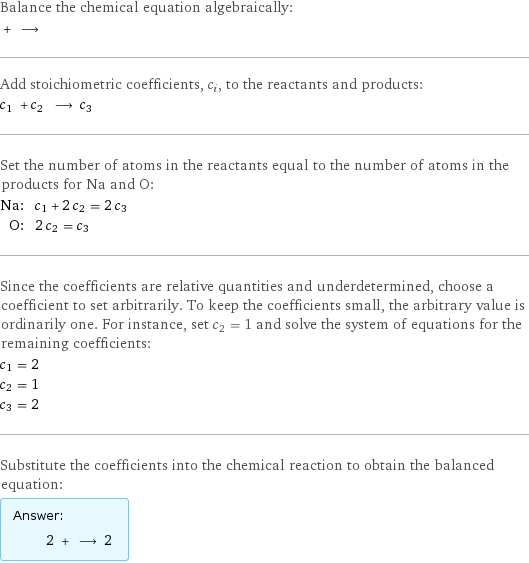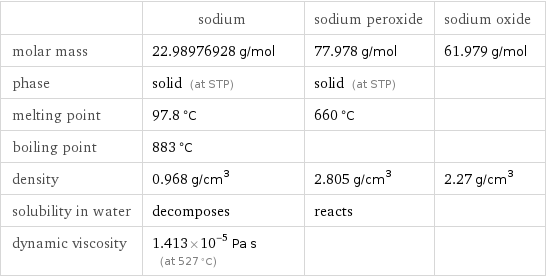Input interpretation

sodium + sodium peroxide ⟶ sodium oxide
Balanced equation

Balance the chemical equation algebraically: + ⟶ Add stoichiometric coefficients, c_i, to the reactants and products: c_1 + c_2 ⟶ c_3 Set the number of atoms in the reactants equal to the number of atoms in the products for Na and O: Na: | c_1 + 2 c_2 = 2 c_3 O: | 2 c_2 = c_3 Since the coefficients are relative quantities and underdetermined, choose a coefficient to set arbitrarily. To keep the coefficients small, the arbitrary value is ordinarily one. For instance, set c_2 = 1 and solve the system of equations for the remaining coefficients: c_1 = 2 c_2 = 1 c_3 = 2 Substitute the coefficients into the chemical reaction to obtain the balanced equation: Answer: | | 2 + ⟶ 2
Structures

+ ⟶
Names

sodium + sodium peroxide ⟶ sodium oxide
Chemical names and formulas

| sodium | sodium peroxide | sodium oxide Hill formula | Na | Na_2O_2 | Na_2O name | sodium | sodium peroxide | sodium oxide IUPAC name | sodium | disodium peroxide | disodium oxygen(-2) anion
Substance properties

| sodium | sodium peroxide | sodium oxide molar mass | 22.98976928 g/mol | 77.978 g/mol | 61.979 g/mol phase | solid (at STP) | solid (at STP) | melting point | 97.8 °C | 660 °C | boiling point | 883 °C | | density | 0.968 g/cm^3 | 2.805 g/cm^3 | 2.27 g/cm^3 solubility in water | decomposes | reacts | dynamic viscosity | 1.413×10^-5 Pa s (at 527 °C) | |
Units
